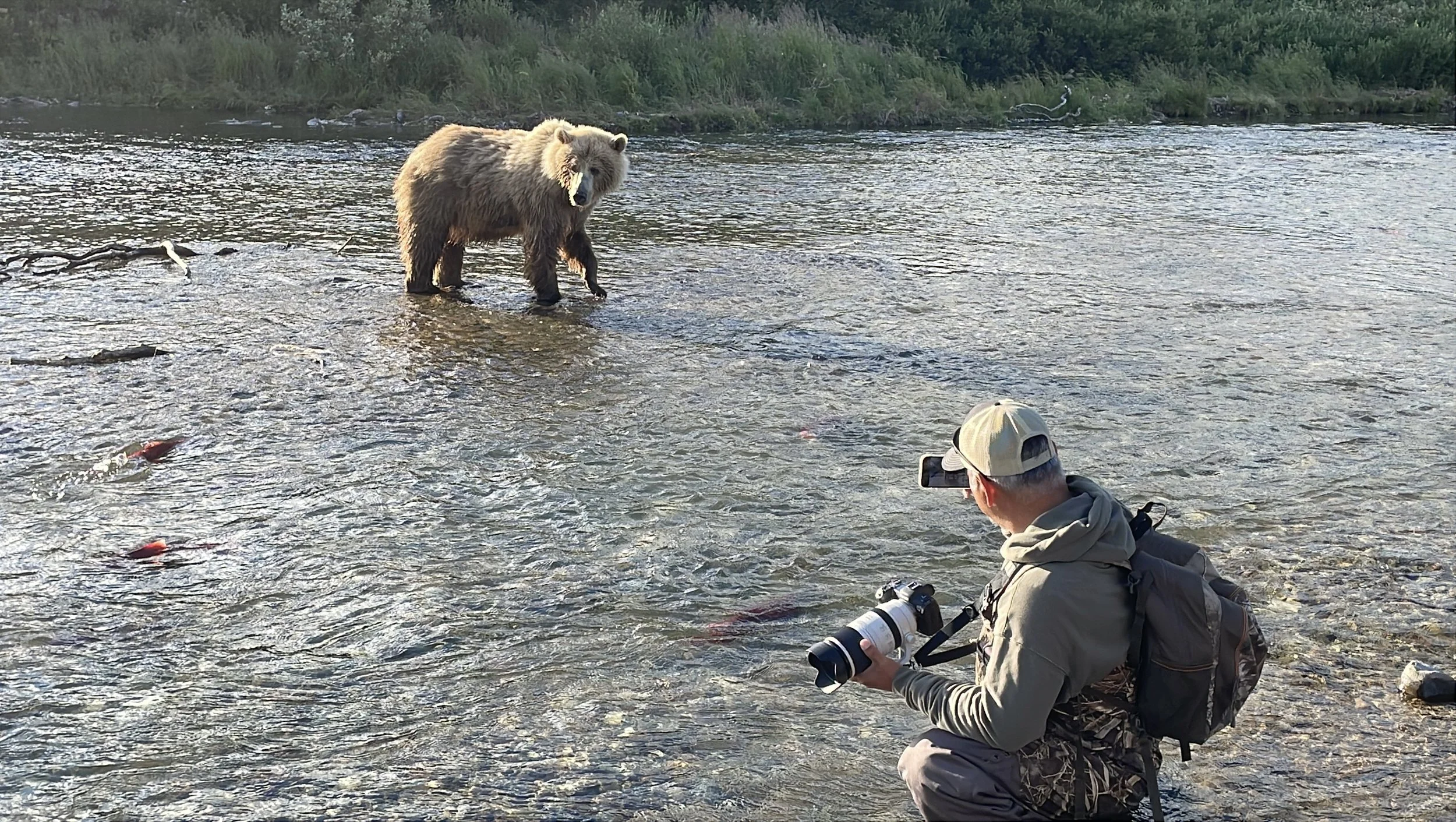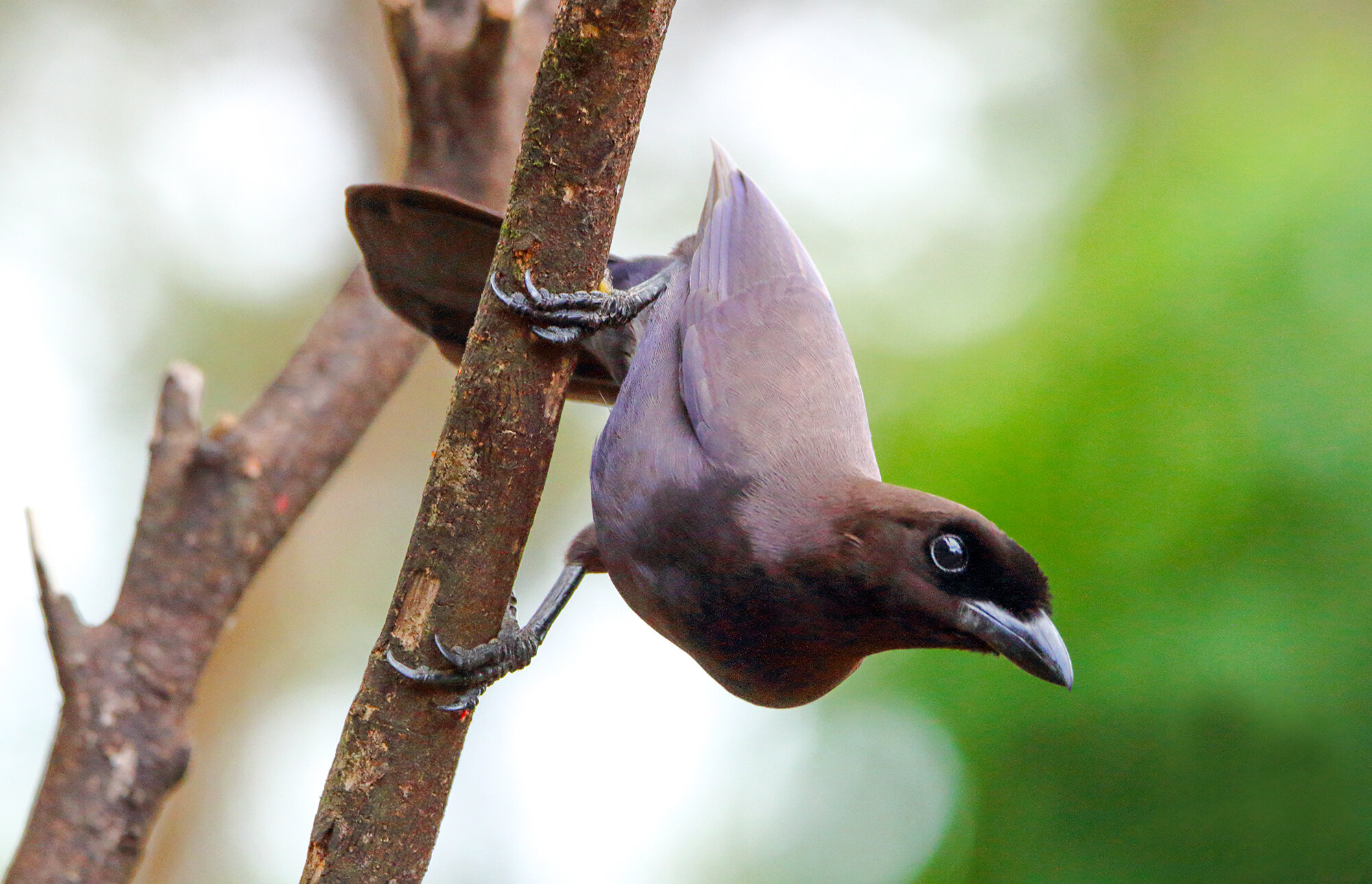1/800, f/6.3, ISO 1250
Some images stay with you long after you’ve taken them. Not just because of the shot itself, but because of the feeling of the moment—the rush, the excitement, the fear of missing it. That’s exactly how I felt when I photographed a Toco Toucan during one of our Anaconda diving expeditions in Bonito, Brazil.
The wildlife here has a special place in my heart. Everything about it is vibrant, wild, and unforgettable. As a kid, I grew up with Fruit Loops sitting on our kitchen table, staring at the box with Toucan Sam on the front. I remember the first time I saw a real toucan at a zoo—it felt like seeing a celebrity. Fast forward to this moment in Brazil, and I had the chance to photograph one in the wild, on its terms.
A Surprise Encounter
Purplish jay
It was early morning, and I was sitting by a bird feeder at our host hotel, waiting for our van to take us to the river to begin our search for anacondas. The light was soft, cutting through the morning mist, creating a perfect natural glow.
I started shooting a motmot as it zipped around, grabbing fruit. The light wasn’t great yet, and my settings were still dialed in for low light. The images came out terrible, so I moved on. Next, a purplish jay swooped in, grabbing some fruit. I snapped a few images and quickly checked my settings. With the light improving, I dropped my ISO, adjusted my shutter speed, and prepared for the next opportunity.
Then, I looked up and froze.
1/800, f/7.1, ISO 3200
Less than ten feet away from me, sitting on the feeder, was a Toco Toucan.
For a moment, I thought I was dreaming. My brain couldn’t process it. I blinked twice, as if my mind was playing tricks on me. Then I remembered—I was holding a camera.
The colors on this bird were unreal. The massive beak, the deep blacks and whites of its plumage, the piercing blue eye ring—it was one of the most beautiful birds I had ever seen. My hands were shaking, and I had to steady myself.
I was star-struck.
I lifted my camera and started firing shots, holding my breath, praying my focus was locked in. The whole time I was thinking, Please be in focus, please be in focus!
The toucan sat on the feeder, eating fruit, seemingly unfazed by my presence. With birds, you never know how long they will stay. It could be seconds, it could be minutes. I kept adjusting my settings between shots, making sure I had the sharpest images possible while keeping my ISO low enough to preserve detail.
1/1600, f/5.6, ISO 2000
I had to push my ISO between 1250 and 3200, which introduced quite a bit of noise in the images. But with the toucan moving so quickly and the morning light still relatively dim, I needed those settings to maintain proper exposure. My shutter speeds ranged between 1/800 and 1/1600, balancing between freezing movement and letting in enough light. The high ISO wasn’t ideal, but I knew I could correct the noise in post-processing.
1/800, f/6.3, ISO 1250
Thankfully, the toucan gave me three to four full minutes, an eternity in bird photography. I shot as much as I could, capturing different angles, expressions, and interactions with the fruit.
When it finally flew off, I sat there for a moment, still processing what had just happened. Then, I ran to tell the rest of our group, still buzzing with excitement. They were already making fun of me for being a birder. But this was different. This was a Toco Toucan, one of the most iconic birds in the world, and I felt compelled to share the moment.
Sadly, the toucan never returned, but I didn’t need it to. I had a few shots, but more importantly, I had a memory etched in my mind forever.
1/1000, f/5, ISO 1600
Lessons in Photography from This Encounter
Be Ready at All Times – I almost missed this shot because I was looking down at my camera. Wildlife photography is all about anticipation, and the best moments happen in an instant.
Constantly Adjust Your Settings – The light had improved, so I lowered my ISO before the toucan arrived. If I hadn’t made that adjustment, I might have had noisy or improperly exposed shots.
High ISO is a Trade-Off – Shooting between 1250 and 3200 ISO introduced noise, but it was necessary to maintain the fast shutter speeds needed to freeze movement. Noise reduction in post-processing helped recover the details.
Stay Calm – The excitement of seeing an animal like this can make you rush, shake, or forget settings. Take a deep breath, steady your hands, and trust your instincts.
Take More Shots Than You Think You Need – Birds move fast, and small changes in focus can make or break an image. I shot as many frames as possible to ensure I got at least a few perfectly sharp images.
This was more than just another wildlife encounter. It was a reminder of why I love wildlife photography—the rush of an unexpected moment, the challenge of getting the shot, and the lasting memory of an experience that goes beyond the image itself.
Thank you for reading!
1/800, f/7.1, ISO 1600








